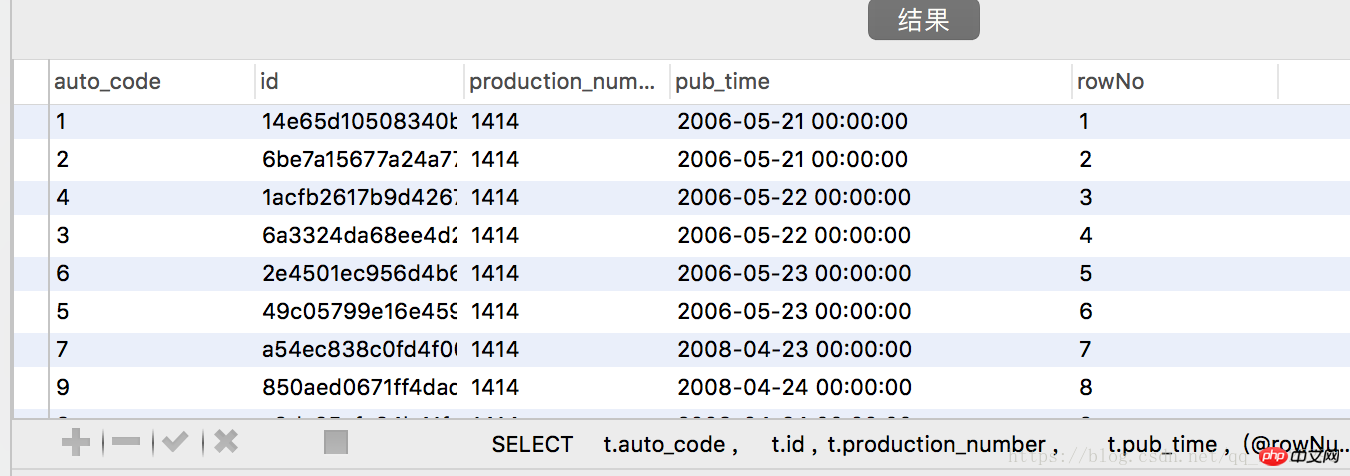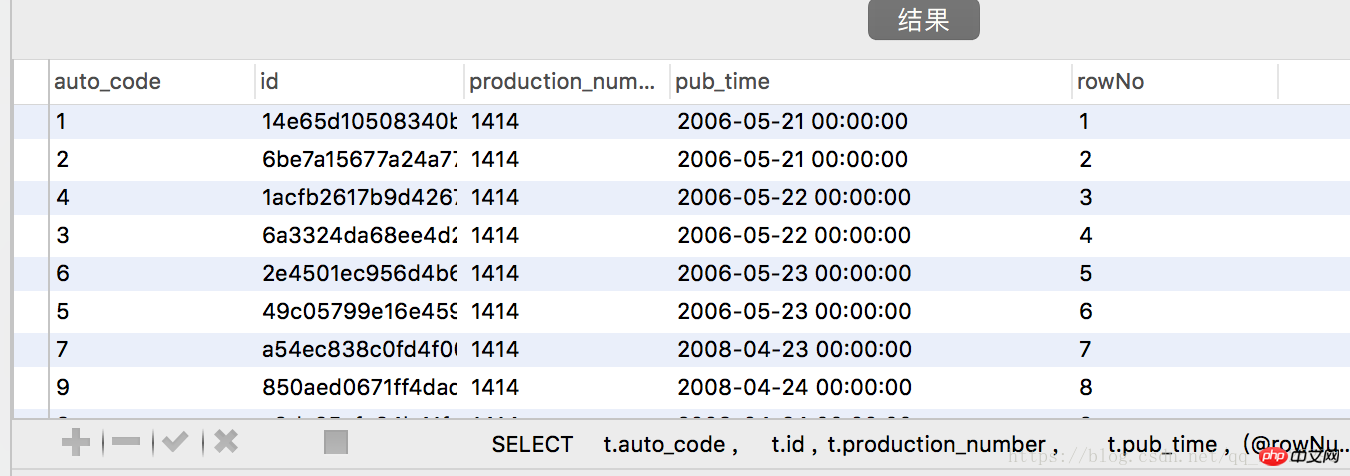
Requirements
You need to check whether the novel has been updated. The novel chapter information table has the release time: pub_time, If the release time interval exceeds three days, the update will be discontinued
Thoughts
CREATE TABLE `t_chapter` ( `id` varchar(255) NOT NULL COMMENT '主键', `auto_code` varchar(255) NOT NULL COMMENT '编号', `production_number` varchar(11) NOT NULL COMMENT '作品编号', `pub_time` datetime DEFAULT NULL COMMENT '发布时间', PRIMARY KEY (`id`) ) ENGINE=InnoDB DEFAULT CHARSET=utf8
SELECT
t.auto_code ,
t.id ,
t.production_number ,
t.pub_time ,
(@rowNum :=@rowNum + 1) AS rowNo FROM
t_chapter t ,
(SELECT(@rowNum := 0)) b WHERE
t.production_number = 1414(指定作品) ORDER BY
t.pub_time ASC
SELECT
count(1) FROM
( SELECT
t.auto_code ,
t.id ,
t.production_number ,
t.pub_time ,
(@rowNum :=@rowNum + 1) AS rowNo FROM
t_chapter t ,
(SELECT(@rowNum := 0)) b WHERE
t.production_number = 979
ORDER BY
t.pub_time ASC
) table1 INNER JOIN( SELECT
t.auto_code ,
t.id ,
t.production_number ,
t.pub_time ,
(@a :=@a + 1) AS rowNo FROM
t_chapter t ,
(SELECT(@a := 0)) b WHERE
t.production_number = 979
ORDER BY
t.pub_time ASC
) table2 ON table1.rowNo + 1 = table2.rowNo
WHERE
timestampdiff(DAY , table2.pub_time , table1.pub_time) > 3;If the query count>0, the work number is 979's works are subject to interruption. More conditions can be determined according to your own business.Description:
@ is used here. I didn’t know what it was at first. Something, then I searched for the mysql row number and found that I used custom variables (mysql features) to sort and displayReference blog: SQL Server query row number
MYSQL rownum implementation
MYSQL custom variable usage (recommended)
CREATE TABLE `t_chapter` ( `id` varchar(255) NOT NULL COMMENT '主键', `auto_code` varchar(255) NOT NULL COMMENT '编号', `production_number` varchar(11) NOT NULL COMMENT '作品编号', `pub_time` datetime DEFAULT NULL COMMENT '发布时间', PRIMARY KEY (`id`) ) ENGINE=InnoDB DEFAULT CHARSET=utf8
SELECT
t.auto_code ,
t.id ,
t.production_number ,
t.pub_time ,
(@rowNum :=@rowNum + 1) AS rowNo FROM
t_chapter t ,
(SELECT(@rowNum := 0)) b WHERE
t.production_number = 1414(指定作品) ORDER BY
t.pub_time ASC
SELECT
count(1) FROM
( SELECT
t.auto_code ,
t.id ,
t.production_number ,
t.pub_time ,
(@rowNum :=@rowNum + 1) AS rowNo FROM
t_chapter t ,
(SELECT(@rowNum := 0)) b WHERE
t.production_number = 979
ORDER BY
t.pub_time ASC
) table1 INNER JOIN( SELECT
t.auto_code ,
t.id ,
t.production_number ,
t.pub_time ,
(@a :=@a + 1) AS rowNo FROM
t_chapter t ,
(SELECT(@a := 0)) b WHERE
t.production_number = 979
ORDER BY
t.pub_time ASC
) table2 ON table1.rowNo + 1 = table2.rowNo
WHERE
timestampdiff(DAY , table2.pub_time , table1.pub_time) > 3;If the query count>0, the work with work number 979 has a broken update , more conditions can be determined according to your own businessExplanation:
@ is used here. At first I didn’t know what it was, and then I searched for mysql The row number is found and displayed using custom variables (mysql features) for sortingRelated articles:
Bubble sort, insertion sort, selection in c language Sorting algorithm comparison
Insertion sort Sorting algorithm learning-insertion sort
Related videos:The above is the detailed content of MYSQL displays row number sorting and compares data sorting from the same table up and down.. For more information, please follow other related articles on the PHP Chinese website!




